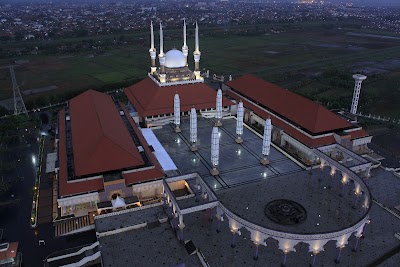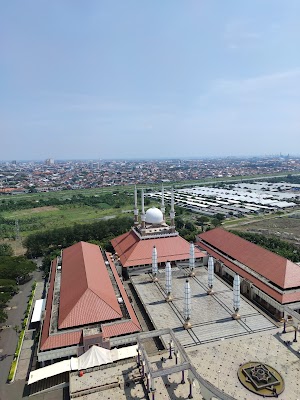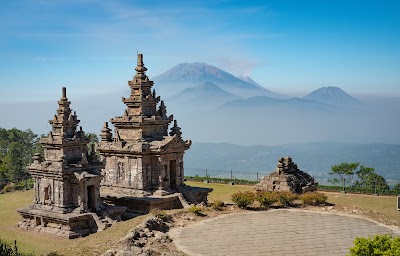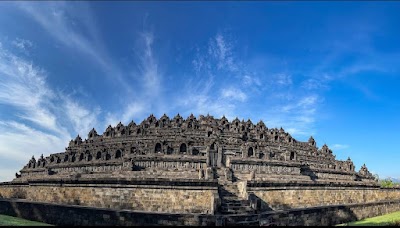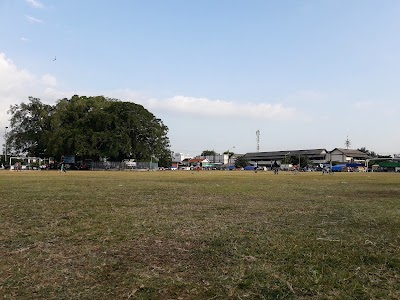Masjid Agung Jawa Tengah (Masjid Agung Jawa Tengah)
Related Places
Overview
Masjid Agung Jawa Tengah, or the Great Mosque of Central Java, is a stunning Islamic place of worship located in Semarang, Central Java, Indonesia. This iconic structure is renowned not only for its religious significance but also for its breathtaking architectural design and rich history.
Constructed between 2001 and 2006, the mosque showcases a harmonious blend of Javanese, Arabic, and Greek architectural styles. Inaugurated by Indonesia’s then-president, Susilo Bambang Yudhoyono, in 2006, this grand project was envisioned as a central hub for religious activities, community gatherings, and educational pursuits.
One of the mosque's most impressive features is its vast size. Covering an expansive area of 25 hectares, Masjid Agung Jawa Tengah can accommodate up to 15,000 worshippers at once. The main prayer hall is adorned with intricate calligraphy and exquisite chandeliers, creating an atmosphere of tranquility and spiritual elevation.
The mosque's architectural design is particularly remarkable for its large central dome, flanked by four minarets, each rising to a height of 62 meters. These minarets symbolize the spread of Islam and are strategically positioned at the four corners of the central prayer area. The central dome, with a diameter of 20 meters, represents the unity of Allah in Islam. Additionally, there is a towering 99-meter-high minaret, which stands apart from the main structure, symbolizing the 99 names of Allah. This minaret offers visitors a panoramic view of Semarang and the nearby coastline, making it a popular attraction for tourists.
A unique feature of the mosque is its six hydraulic umbrellas in the courtyard, inspired by the Masjid al-Nabawi in Medina, Saudi Arabia. These umbrellas can be opened and closed to provide shade for congregants during prayer times, particularly in the hot tropical climate of Indonesia.
Masjid Agung Jawa Tengah serves not only as a place for regular prayers but also as a center for Islamic learning and cultural activities. The mosque complex includes a library, a museum, and several educational facilities. The museum houses a variety of Islamic artifacts, manuscripts, and historical pieces, offering insights into the rich Islamic heritage of Indonesia and the broader Muslim world.
Surrounding the mosque, visitors will find a beautifully landscaped garden and a serene reflecting pool, which enhance the peaceful ambiance of the site. These areas are perfect for leisurely strolls and provide tranquil spaces for contemplation or relaxation.
The mosque comes alive during Islamic holy months and festivals. During Ramadan, it hosts nightly prayers and special events, attracting Muslims from across the region. The end-of-Ramadan celebration, Eid al-Fitr, transforms the mosque into a vibrant hub of festivities, with thousands gathering to pray and celebrate. Similarly, Eid al-Adha is marked by special prayers and the ritual sacrifice of animals, with the meat distributed to the less fortunate.
For foreign tourists, a visit to Masjid Agung Jawa Tengah offers an opportunity to appreciate not only its architectural splendor and religious importance but also to gain deeper insights into Indonesian culture and the Islamic faith. The mosque's friendly staff are typically available to provide guided tours and answer any questions visitors may have about the mosque's practices and history.
In conclusion, Masjid Agung Jawa Tengah stands as a testament to Indonesia's rich cultural and religious tapestry. With its stunning architecture, historical significance, and diverse activities, it is a must-visit destination for anyone traveling to Central Java. Whether drawn by its serene beauty, cultural richness, or spiritual significance, this great mosque promises an enriching and memorable experience.



